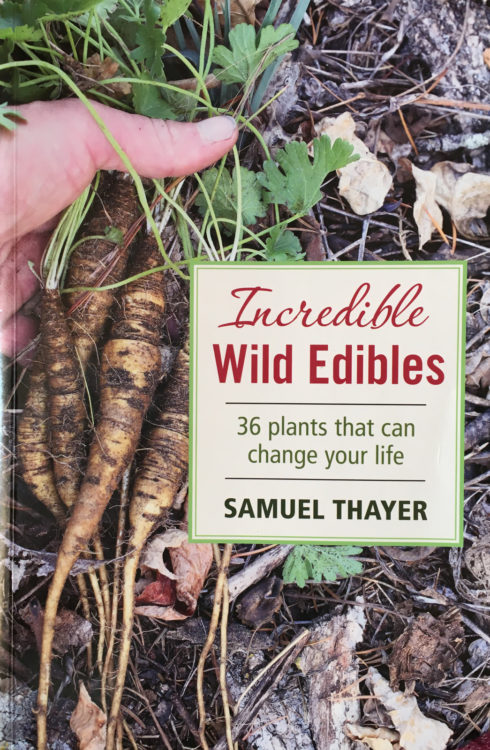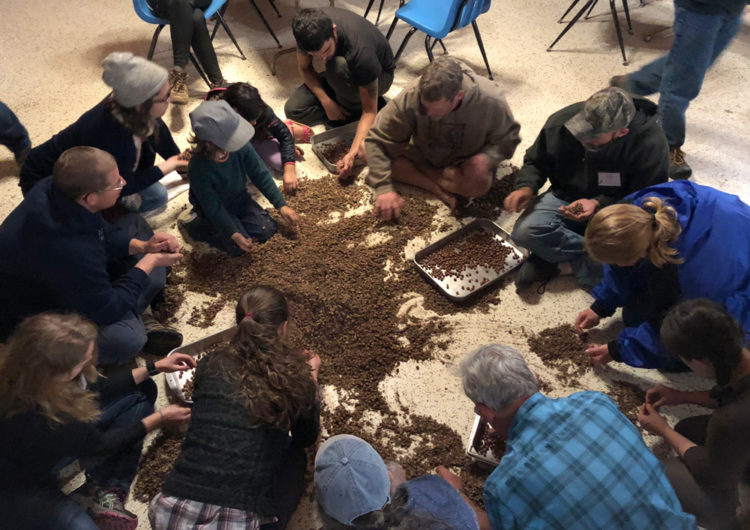 If you are an avid fan of wild food foraging, then you know the author Samuel Thayer already. His books, Nature’s Garden (2010) and Forager’s Harvest (2006), set a new standard for foraging literature, with longer and more in-depth plant accounts than the majority of edible wild plant books out there, and each one exhaustively researched and supported by the author’s extensive first-hand experience collecting, preparing, and eating the wild foods he writes about.
If you are an avid fan of wild food foraging, then you know the author Samuel Thayer already. His books, Nature’s Garden (2010) and Forager’s Harvest (2006), set a new standard for foraging literature, with longer and more in-depth plant accounts than the majority of edible wild plant books out there, and each one exhaustively researched and supported by the author’s extensive first-hand experience collecting, preparing, and eating the wild foods he writes about.
His latest book, Incredible Wild Edibles (October, 2017), is no different in that regard, offering foragers another 36 supremely well-documented edible plants, replete with range maps and color pictures, to add to their wild repertoire. These include pokeweed, pawpaw, wild persimmon, caraway, prairie turnip, sassafras, watercress, hickory, fennel, black mustard, wild garlic, hops, Japanese knotweed, shepherd’s purse, purple poppy mallow, quickweed, and chufa, to name a few.
Controversy surrounds some of these wild edibles: Does sassafras actually cause cancer? How do I safely prepare pokeweed? Samuel Thayer tackles these topics expertly, utilizing far-ranging research from peer-reviewed journals to international sources to get to the bottom of these issues and provide readers with reliable conclusions.
Nor does he shy from teaching us how to identify and eat water parsnip (Sium suave), even though it resembles and often shares habitats with several species of water hemlock—the deadliest wild plants in North America. Although numerous guides mention this plant’s edibility, Incredible Wild Edibles is the first to provide the necessary details for an avid, careful student to correctly identify and make use of water parsnip as a food source.
The book also unveils several little-known but excellent edible plants—such as caraway, a feral species that bears delicious roots and greens in addition to seeds; sochan or cut-leaf coneflower (Rudbeckia laciniata), whose young leaves are a well-known edible in the southern Appalachians, but virtually unknown as an edible in other parts of its broad range; and creeping bellflower (Campanula rapunculoides), which grows in my own front yard and I had no idea it was edible until Sam told me about it!

I’ve always appreciated Samuel Thayer’s perspective on issues pertaining to foraging, and in this aspect the new book does not disappoint—including essays on invasive plants, herbicide overuse, and his take on “Does Foraging Harm the Environment?” He encourages active stewardship—whether we act like “vigilante ecologists” by pulling the more pernicious invasive species from forgotten spaces to give native plants a chance; or we plant seeds gathered from nearby seedheads into the holes left behind from digging roots.
At the book’s finish he proposes a new relationship with nature, termed “ecoculture,” that he defines as “the management of natural ecosystems to enhance their production of useful products.” An alternative to both agriculture and the concept of “reducing our impact,” he argues that we in fact need to “increase our impact—our positive impact—on the landscape,” and “become agents of healing the Earth, even as we gather the Earth’s gifts to nourish and heal ourselves.”
It struck me throughout the book how supremely connected Samuel Thayer is to the land—from the childhood stories of spending nearly every waking moment outdoors, to the many observations of plant ecology that only a person who has spent a lifetime paying attention would know. On top of that, it is wonderful writing, the kind that repeatedly gives me pause to contemplate life beyond foraging, and to savor each story over and over again.
Even if you don’t fancy yourself a forager, Incredible Wild Edibles is a fantastic read. Buy it directly from Forager’s Harvest to support the author. The price is reasonable, shipping is free, and it’s an awesome deal if you bundle his earlier books into your order.

Thank you for this review! Of his books, which would you say is best for Colorado? Do all of them cover lots of plants that grow in the Front Range? I want to get just one as a gift for a friend who just bought a property, and I don’t know which one!